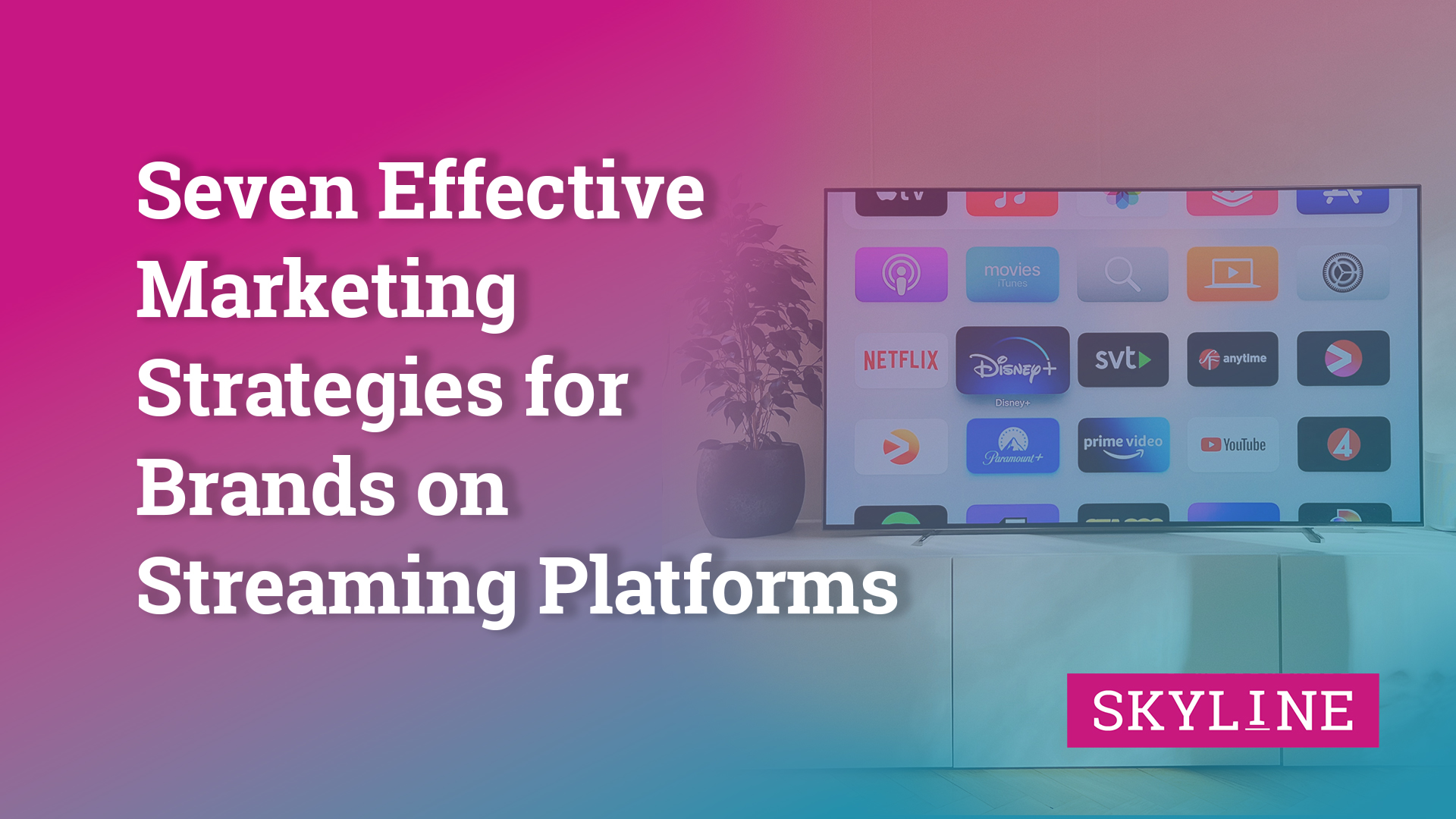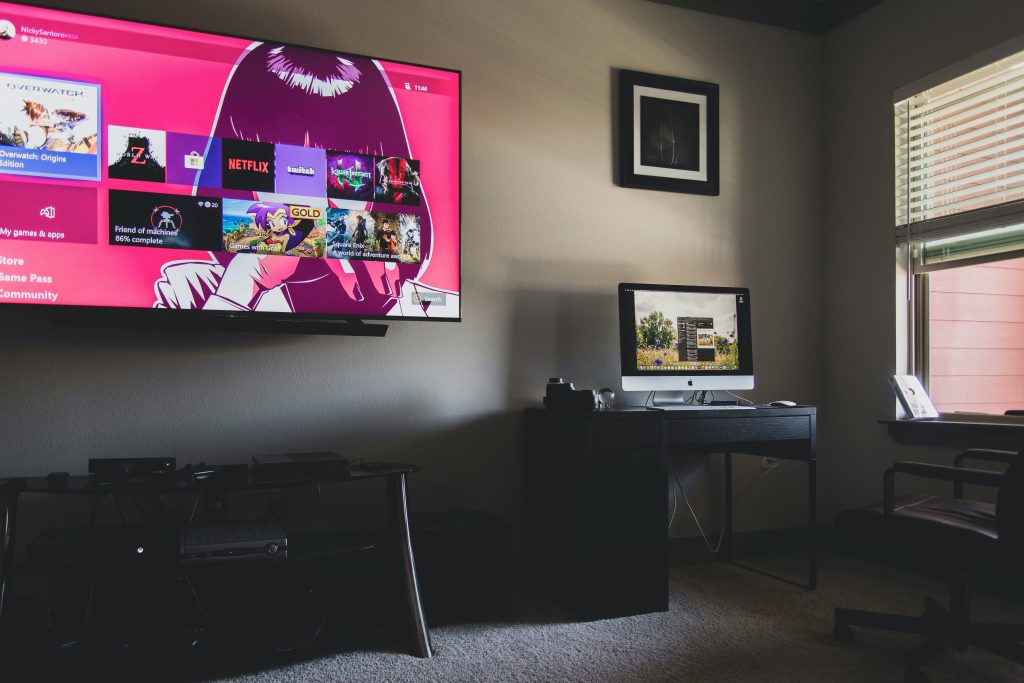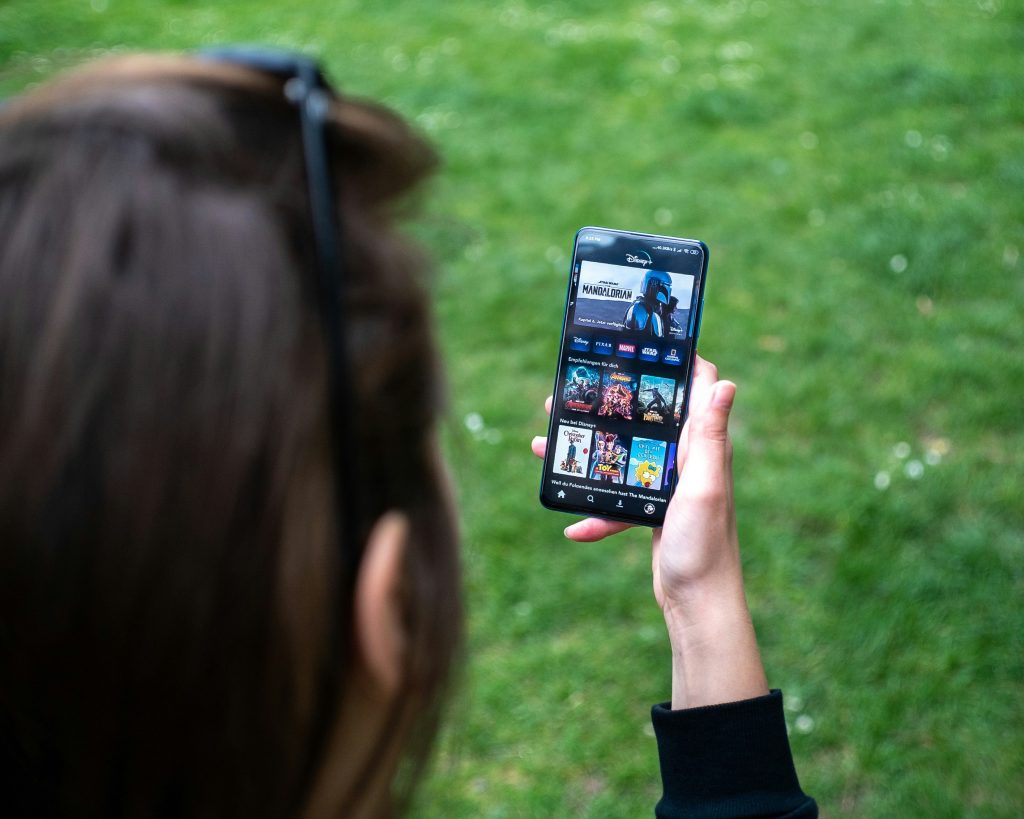Why Streaming Platforms Are the New Frontier for Marketers
Streaming platforms are central to how people consume content and how brands need to consider advertising. Whether tuning into a favorite podcast, catching a live stream on Twitch, or scrolling through short-form videos on Instagram, today’s audiences choose what to watch, when, and how to engage.
Research shows that the video streaming market is valued at over $670 billion and is projected to grow to over $2.5 trillion by 2032. For marketers, the shift in value and consumer habits presents an opportunity for highly targeted, personalized, and creative campaigns that resemble experiences more than traditional advertisements.
However, success in this space requires more than simply repurposing traditional media. It calls for a new strategy that aligns with how people interact with content across streaming environments.
Continue reading to discover seven proven brand strategies to create meaningful connections on the platforms where attention is focused.

1. Go native: Match your creative to the platform.
To truly engage streaming audiences, brands must think beyond generic ad formats and embrace platform-native creativity. Each streaming platform has its user culture, content style, and engagement habits.
For this reason, native advertising is the strategy brands should consider when developing ads for streaming platforms. A polished, 30-second commercial might work well in an over-the-top (OTT) environment like Hulu. Still, that spot will likely feel out of place on Instagram, where authenticity and immediacy rule.
Listeners expect messaging that fits the tone of the audio experience and doesn’t interrupt the flow on Spotify or in podcasts. Successful marketers tailor their creative assets to fit the platform’s format—short-form vertical videos for social apps, immersive audio spots for podcast listeners, and interactive overlays or clickable content for video streams.

By meeting audiences where they are and in their preferred formats, brands can boost relevance and avoid disruption fatigue.
2. Leverage data to drive precision targeting.
One of the most valuable aspects of streaming platforms is access to real-time, granular data. These platforms offer insights into user demographics, behavior, interests, and consumption patterns, allowing marketers to target with far greater precision than traditional media ever allowed.
Research indicates that 71% of consumers expect companies to deliver personalized interactions. Instead of broadcasting the same message to everyone, brands can deliver personalized experiences to specific audience segments based on region, device type, time of day, or viewing and listening history.
A precision level of targeting enhances relevance and reduces waste. Innovative brands use A/B testing across different creative versions to optimize their campaigns continuously. By letting the data guide decisions, marketers can uncover what resonates most and make real-time adjustments that drive performance.
3. Collaborate with influencers and streamers.
In the streaming world, creators and personalities drive engagement. Whether a Twitch streamer hosting a gameplay session or a YouTube creator sharing a product story, these individuals have built deep trust with their communities. When brands partner with them in a natural and aligned way, the results can be powerful.
Influencer collaborations allow your brand to be introduced organically, as part of the content rather than as an interruption. The key is to give creators room to bring your message to life in their voice and style. Ensuring authenticity and boosting the likelihood that their audience will respond positively. Instead of forcing scripted endorsements, consider how your product or service fits into their daily routine, interests, or personal story.

4. Use interactive and shoppable ad formats.
Contemporary streaming platforms offer capabilities that extend beyond traditional passive advertisement placements. Interactive advertising formats, including polls, clickable overlays, and shoppable video advertisements, encourage user engagement rather than mere consumption.
These formats increase engagement and can drive immediate action. For example, a QR code embedded in a live stream or a “tap to learn more” button in a short-form video allows viewers to move seamlessly from content to conversion.
With minimal friction, interactive prompts can direct users to specific actions on podcast platforms or voice-enabled streaming services. When brands thoughtfully incorporate interactive elements, they increase recall and create smoother, more direct purchasing paths, turning attention into measurable outcomes.
5. Integrate within the content, not just around it.
Audiences are increasingly adept at tuning out traditional breaks and banners as ad fatigue grows. Brands should look for ways to embed themselves directly into the content experience to stay relevant. This might involve product placements in a live stream, co-branded episodes with a podcast host, or sponsoring a recurring content segment that aligns with your brand identity.
When done right, this type of integration feels like an extension of the story, not a disruption. The best executions happen when brands work closely with content creators early in the development process to ensure that the integration is organic and adds value to the viewer or listener. The goal isn’t just visibility—it’s relevance and memorability.

6. Build cross-platform campaign synergy.
Consumers rarely engage with content in isolation. A user might discover your product on a video stream, be reminded of it through an audio ad on their commute, and finally click through a mobile ad while browsing social media.
That’s why building cross-platform campaign synergy is essential. Instead of treating each platform as a standalone channel, marketers should create cohesive campaigns that flow across touchpoints. Marketers should not duplicate the same advertisement across channels but adapt their message and ad creative while preserving consistency in brand voice and theme.
Cross-platform strategies help reinforce messaging, increase brand recall, and create a seamless user journey from awareness to action.
7. Prioritize measurement and real-time optimization.
With so much data, successful streaming campaigns must be grounded in strong measurement strategies. No more spray and pray—brands need clear KPIs for business outcomes.
Whether your goal is brand awareness, engagement, lead generation, or sales, marketers should set up each campaign with the tools to track performance and accurately attribute impact.
Platforms and third-party providers now offer advanced analytics, including attribution models, brand lift studies, and conversion tracking. These insights allow marketers to understand what’s working and what isn’t, and to pivot when needed.
The most effective streaming strategies treat measurement not as a post-campaign exercise, but as a continuous loop of learning and improvement.